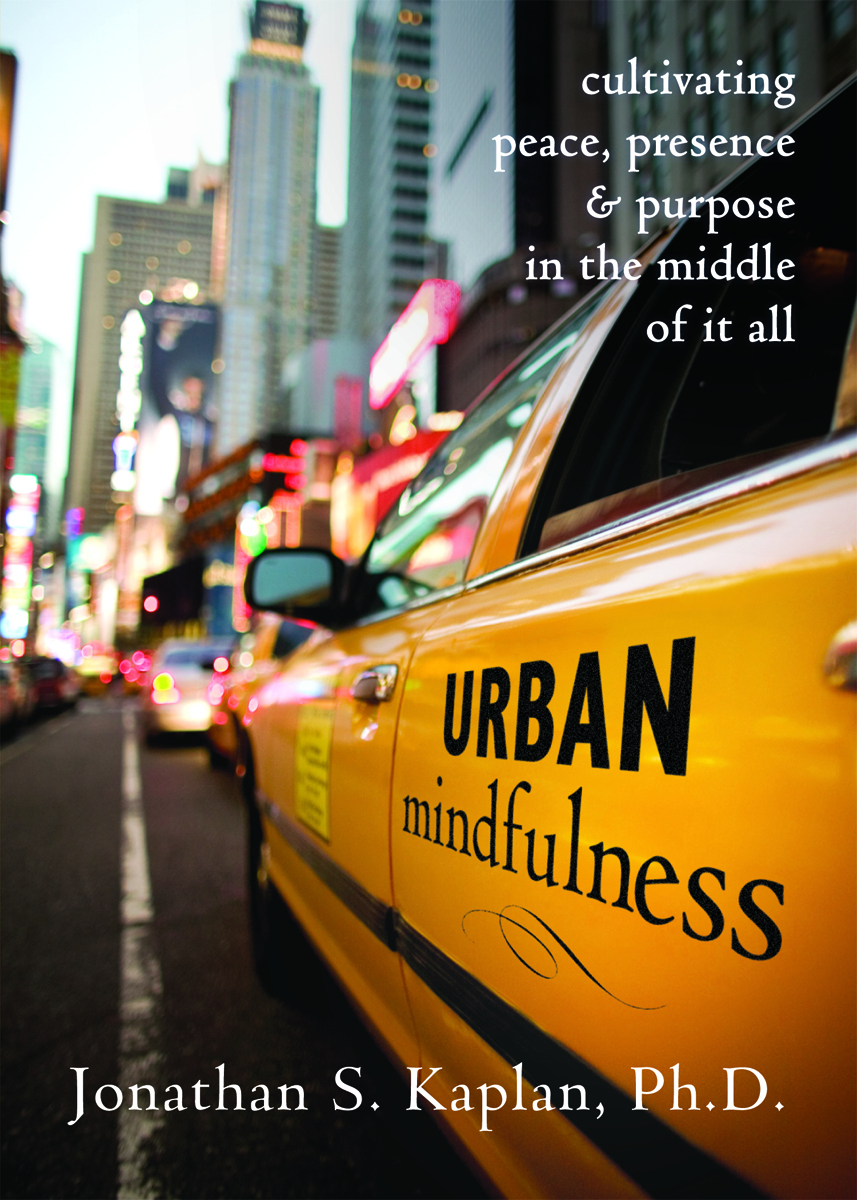Monday
Mar142011
Honk If You Love Mindfulness!: 10 Tips for Mindful Commuting
 Monday, March 14, 2011 at 11:25AM
Monday, March 14, 2011 at 11:25AM  By Jonathan S. Kaplan, Ph.D.
By Jonathan S. Kaplan, Ph.D.For the past couple months, I’ve been busily promoting my new book in interviews with radio stations, TV programs, and reporters across the country. One of the most frequently asked questions has been: How do people practice mindfulness when commuting? Indeed, this can be an incredibly frustrating and stressful experience for us. Though I’ve shared insights with various media sources (see this article on MSNBC, for example: De-stress Your Commute), I thought that I would compile some suggestions and offer them here. So, without further ado, here are the Top Ten Tips for Mindful Commuting (sorry in advance for the cross-posting).
10. Let go of trying to get anywhere fast. Traffic jams are characterized by the two very stressful psychological factors: (a) they are out of our control (i.e., we can't make the other cars disappear) and (b) they are unpredictable (i.e., we don't know when traffic will start moving smoothly again). So, rather than getting mired in worry about being late or cursing the other drivers, accept that you're going to spend some time in the car. You can't change the traffic, but you can change your attitude!
9. Plan to use your commuting time constructively. You know that you'll generally spend a certain amount of time commuting, so why not use it purposefully? Instead of distracting yourself with nonsense, decide ahead of time what you'll do during that time. Maybe you'll download and listen to some podcasts on mindfulness, create a mix tape, or listen to a college lecture. If you're riding public transportation, you can find some nice "subway only" reading or watch a movie on your phone.
8. If you're on public transportation, meditate on the physical feelings in your body. If you're standing on the bus, for example, you might notice how the muscles in your legs tense and release to help you maintain your balance. This is helpful because it provides an anchor for our thinking, which can be prone to ruminate on stressful or anxiety-related topics when it wanders. You might want to check out my YouTube video for a demonstration: Subway Meditation.
7. Mindfully notice whatever comes your way. Notice the colors of the cars around you, the faces of the people, and your thoughts and emotional reactions as they arise. Cultivate this ability to simple observe and pay attention your thoughts, emotions, and sensory experiences untainted by any judgments or criticisms. Notice what's going through your mind about the situation and how you respond emotionally and physically as you keep thinking about it. You might use this strategy if the traffic has completely stopped for a while.
6. Engage the people around you in pleasant and nice ways (yes, even if they're trying to get in front of your car). If you're driving, you might make space for other drivers to come in front of you. If you're on public transportation, you might offer your seat to someone else. This is helpful for a couple reasons. First, we stop taking things so personally. The hectic commute affects all of us, not just you. By recognizing that we're all experiencing something bad together, it can bring us closer to dealing with it constructively. It's the difference between thinking to yourself: "You're in my way!" vs. "This really sucks for us, doesn't it?" Second, it feels nicer for us to be nice, regardless of how other people act. If we're really honest, it doesn't feel good to be angry or annoyed all the time, does it? We might feel justified in having that reaction, but ultimately it is undermining our own physical and emotional health.
5. Focus your attention on some aspect of your environment. If you’re driving, you might try to find police cars, which involves being on the lookout for cars on the side of the road, vehicles around you (potentially unmarked), and flashing lights. If you’re using public transportation, you can spend a few minutes trying to notice whatever has the color purple. This exercise is not meant to make you paranoid, but rather prompt a playful re-engagement with your surroundings.
4. Breathe before you honk! Often when driving, we use the horn in anger as opposed to a simple “Toot! Look! I’m over here!” message. So, when you find yourself about to lean on the horn to let someone else have it, take a few moments to breathe deeply and notice the stress and anger that you’re holding in your body. Rationally, you know that blowing the horn is not going to make you feel any better, and it can actually create a more significant conflict with one of your fellow drivers. So, instead of venting or stifling it, observe how it manifests in your body. This can be incredibly difficult to do, but keep trying.
3. Just drive (or ride). When I was a teenager, I would drive simply for the sake of driving, feeling the burst of speed when pressing the accelarator, anticipating movement of the traffic, leaning into turns, etc. Sometimes, our efforts to distract ourselves while driving or riding can be problematic. Not surprisingly, research has shown that talking on the phone or texting while driving do increase the risk of accidents. At such times, we can passively listen to something (like the radio or even college lectures), but the act of generating a response takes too much of our attention away from driving. So, why not just drive? If you’re riding public transit, you can meditate a little bit (see #8 above).
2. Convert a normally stressful experience into a reminder to de-stress. In his delightful book Peace is Every Step, Thich Nhat Hanh describes using red lights as cue to notice our breathing. This can make the process of stopping and waiting more pleasurable, or at least an opportunity for practicing mindfulness. We can apply the same approach to times when we see brake lights or just waiting. Even noticing how the stress, frustration, and annoyance manifest in our body, mind, and heart can be an incredibly helpful--if not necessarily relaxing--experience.
1. Finally, if you’re looking for more tips like these, check out my book, Urban Mindfulness: Cultivating Peace, Presence, and Purpose in the Middle of It All. It has many practical suggestions and exercises for mindfulness when you’re on the go. And, it’s the perfect size for reading on the train. Just don’t read it when you’re driving though: mindful car crashing is not something you want to experience!


